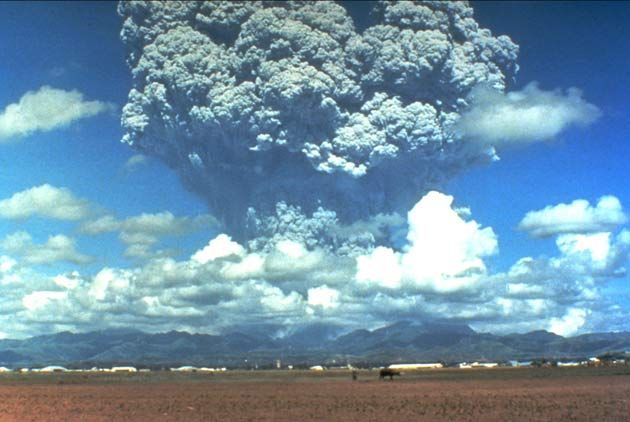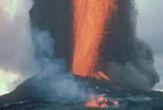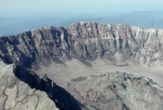Volcano's Impact Depends on Latitude

Volcanic eruptions at northern latitudes have a different impact on the climate than eruptions in the tropics, a new study shows.
Volcanoes can pump ash and chemicals 10 miles (16 kilometers) or higher into the air in major eruptions. Winds push the stuff around the planet. Up high, sulfur dioxide from a volcano mixes with water vapor and forms small particles called aerosols, which block sunlight and affect climate.
Using data from real eruptions and climate projections from advanced computer models, researchers looked at how differently the material is spread in an Alaskan eruption versus one in the Philippines.
Turns out tropical eruptions result in a wider distribution of particles, while material from eruptions in the far north tends to stay up there. The result can affect your weather for months.
Northern eruptions are carried east by a band of wind around the Arctic. The wind circles the planet at about the latitude of Moscow.
In 1912, the Mount Katmai region in Alaska generated one of the largest eruptions of the 20th Century. (The main source was actually the nearby volcano Novarupta, but it?s long been called the Katmai eruption).
Ash fell a foot deep across more than 3,000 square miles, and the higher cloud was carried as far away Africa.
Sign up for the Live Science daily newsletter now
Get the world’s most fascinating discoveries delivered straight to your inbox.
The Katmai eruption was compared to the 1991 explosion of Mount Pinatubo in the Philippines. That event caused the entire planet to cool by about 1 degree.
Tropical eruptions tend to create aerosols that block heat from the sun in the lower atmosphere, cooling temperatures in the subtropics. But in turn, this creates a reduced north-to-south temperature gradient that generally causes warmer winters over the Northern Hemisphere.
"Although the Mount Katmai eruption was found to have some role in the winter climate, including distinct cooling in southern Asia, the most significant climate effect was during the summer when strong cooling over the Northern Hemisphere landmasses caused a decrease in the Asian monsoon circulation," said Luke Oman, a researcher at Rutgers University. "Large tropical volcanic eruptions tend to spread aerosols around the globe, but with high-latitude eruptions like Katmai, they remain north of 30?N latitude."
"This study not only offers further evidence that the location and intensity of an eruption largely determine the Earth's overall climatic response, it also helps us see how well our computer models perform," said co-author Gavin Schmidt of NASA.
- Volcano Science & History
- Dangerous US Volcanoes Not Properly Monitored
- New Volcano Threat: Just When You Think It's Safe ...
- Super Volcano Will Challenge Civilization, Geologists Warn

The Fury
of Volcanoes

Mount St. Helens
in 2004
Robert is an independent health and science journalist and writer based in Phoenix, Arizona. He is a former editor-in-chief of Live Science with over 20 years of experience as a reporter and editor. He has worked on websites such as Space.com and Tom's Guide, and is a contributor on Medium, covering how we age and how to optimize the mind and body through time. He has a journalism degree from Humboldt State University in California.












